
The Diverse Beauty of Coronado National Forest
Discover the diverse landscapes and wildlife of Coronado National Forest, a stunning natural escape in Arizona offering hiking, camping, and breathtaking views.
Coronado National Forest in Arizona is a treasure trove of natural wonders and outdoor adventures. Spanning over 1.7 million acres, this vast forest is a mosaic of landscapes ranging from towering pine forests to arid deserts. It is a paradise for hikers, campers, and nature lovers looking to escape into the wild. The forest is divided into five ranger districts, each offering unique experiences. The Santa Catalina Mountains, near Tucson, are a highlight with their scenic drives, challenging trails, and breathtaking views from Mount Lemmon. The Chiricahua Mountains, known for their striking rock formations, are a must-visit for those interested in geology and photography. Wildlife enthusiasts can look forward to spotting a variety of animals, including black bears, mountain lions, and numerous bird species. The forest's diverse ecosystems provide habitats for many rare and endangered species, making it a significant area for conservation. Whether you are interested in a peaceful day of birdwatching or an adrenaline-pumping hike, Coronado National Forest has something for everyone.
Local tips in Coronado National Forest
- Check the weather: The forest's elevation changes can lead to sudden weather shifts. Be prepared for varying conditions.
- Permits required: Some areas and activities, like camping and certain trails, may require permits. Check ahead to avoid any surprises.
- Stay hydrated: The Arizona heat can be intense, especially in the lower desert areas. Carry plenty of water.
- Visit in spring or fall: These seasons offer the most pleasant temperatures and fewer crowds, making your visit more enjoyable.
- Respect wildlife: Keep a safe distance from animals and do not feed them. This helps protect both you and the wildlife.
The Diverse Beauty of Coronado National Forest
Coronado National Forest in Arizona is a treasure trove of natural wonders and outdoor adventures. Spanning over 1.7 million acres, this vast forest is a mosaic of landscapes ranging from towering pine forests to arid deserts. It is a paradise for hikers, campers, and nature lovers looking to escape into the wild. The forest is divided into five ranger districts, each offering unique experiences. The Santa Catalina Mountains, near Tucson, are a highlight with their scenic drives, challenging trails, and breathtaking views from Mount Lemmon. The Chiricahua Mountains, known for their striking rock formations, are a must-visit for those interested in geology and photography. Wildlife enthusiasts can look forward to spotting a variety of animals, including black bears, mountain lions, and numerous bird species. The forest's diverse ecosystems provide habitats for many rare and endangered species, making it a significant area for conservation. Whether you are interested in a peaceful day of birdwatching or an adrenaline-pumping hike, Coronado National Forest has something for everyone.
When is the best time to go to Coronado National Forest?
Iconic landmarks you can’t miss
Coronado National Memorial
Discover the breathtaking landscapes and rich history of Coronado National Memorial, a hidden gem in Arizona's Coronado National Forest.

Santa Catalina Natural Area
Discover the breathtaking trails and serene beauty of Santa Catalina Natural Area, a hiker's dream in Mt. Lemmon, Arizona, perfect for all nature lovers.
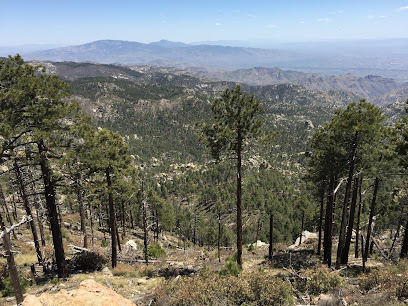
Unmissable attractions to see
Kartchner Caverns State Park
Explore the breathtaking beauty of Kartchner Caverns State Park, home to stunning limestone formations and diverse desert wildlife in Arizona.

Chiricahua National Monument
Explore the breathtaking rock formations, wildlife, and history of Chiricahua National Monument, a gem in Arizona's stunning landscape.

Old Tombstone Western Theme Park
Experience the thrill of the Wild West at Old Tombstone Western Theme Park, where history comes alive with gunfights, live entertainment, and immersive attractions.

Tanque Verde Ranch
Discover the beauty of the Sonoran Desert at Tanque Verde Ranch, a premier lodge and resort hotel offering adventure, relaxation, and gourmet dining.

Coronado National Memorial
Explore the breathtaking beauty and rich history of Coronado National Memorial, a serene escape in Arizona's stunning natural landscapes.
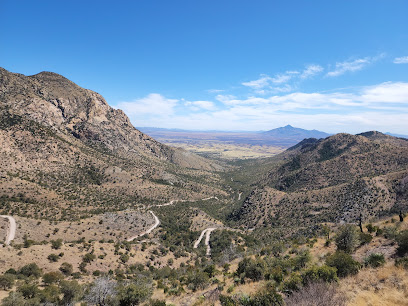
Ramsey Canyon Preserve-Nature Conservancy
Discover the breathtaking beauty of Ramsey Canyon Preserve, a nature lover's paradise with diverse wildlife and stunning hiking trails in Arizona.
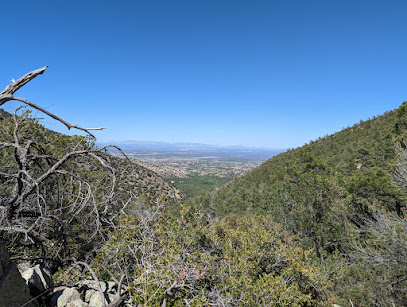
Empire Ranch Foundation
Explore the captivating history and natural beauty of the Empire Ranch Foundation in Sonoita, Arizona, a must-visit destination for all travelers.
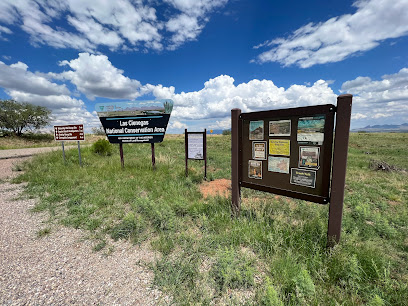
Madera Canyon
Explore Madera Canyon: A Birdwatcher's Paradise and Hiking Haven in the Santa Rita Mountains of Arizona.

Las Cienegas National Conservation Area
Explore the breathtaking landscapes and rich wildlife of Las Cienegas National Conservation Area, a natural sanctuary in Arizona perfect for outdoor enthusiasts.

Coronado Peak Trail
Explore Coronado Peak Trail in Arizona, a stunning hiking area with breathtaking views, diverse wildlife, and a perfect escape into nature's beauty.

Benson Historical Museum
Explore the rich history of Benson, Arizona at the Benson Historical Museum, where local stories and artifacts come alive.
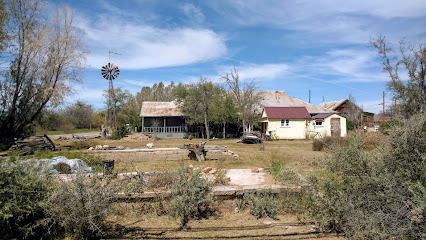
Foothills Trail Kartchner Caverns
Experience the stunning landscapes and unique geological features of the Foothills Trail at Kartchner Caverns in Benson, Arizona, a must-visit for nature lovers.

Coronado Cave
Discover the natural beauty and geological wonders of Coronado Cave in Arizona - a must-visit destination for nature lovers and adventure seekers.

Miller Peak Wilderness
Explore Miller Peak Wilderness in Arizona for stunning landscapes, rich wildlife, and endless outdoor adventures in a serene natural setting.

T-Rex
Explore T-Rex, a captivating dinosaur attraction in Benson, Arizona, perfect for family fun and educational adventures.
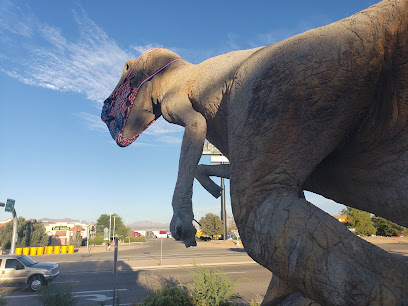
Markets, malls and hidden boutiques
Coronado National Forest
Discover the breathtaking beauty and adventure of Coronado National Forest, a natural paradise for hiking and wildlife enthusiasts in Arizona.

Walmart Supercenter
Explore Walmart Supercenter in Benson, AZ, for all your shopping needs—from groceries and clothing to electronics and home goods.

Hobby Lobby
Discover creativity at Hobby Lobby in Sierra Vista, Arizona, a craft store that inspires with its vast selection of art supplies, fabric, and home décor.

Midtown Mercantile Merchants, LLC
Discover vintage treasures and local artistry at Midtown Mercantile Merchants, Tucson's premier destination for antiques and unique gifts.

Marshalls
Shop smart at Marshalls in Sierra Vista for unbeatable deals on stylish clothing, accessories, and home goods perfect for every traveler.

Post Exchange
Discover the Post Exchange in Fort Huachuca for an extensive selection of goods and a friendly shopping experience that reflects local culture.

Tombstone Boothill Gift Shop and Graveyard
Explore the fascinating history of the Wild West at the Tombstone Boothill Gift Shop and Graveyard, where shopping meets the stories of legendary outlaws.

Old Town Artisans | Downtown Tucson Shops
Explore Tucson's artistic heart at Old Town Artisans, a vibrant marketplace of unique crafts and local culture.

Empire Ranch Foundation
Discover the heritage and natural beauty of the Empire Ranch Foundation in Sonoita, Arizona, a perfect blend of history and wildlife for every traveler.

Military Clothing Sales Store
Shop for quality military gear at the Military Clothing Sales Store in Fort Huachuca - your one-stop destination for official military apparel.

Golden Rule
Discover Golden Rule in Sierra Vista, AZ - a premier destination for unique jewelry, exquisite antiques, and expert appraisals that capture the essence of craftsmanship.

The Seasoned Woman
Discover unique gifts and local treasures at The Seasoned Woman, Tucson's charming boutique for souvenirs, candles, and fashion accessories.

Que Bonita Furniture
Explore Que Bonita Furniture in Tucson for a unique blend of handcrafted furniture, art, and local treasures that capture the essence of the Southwest.
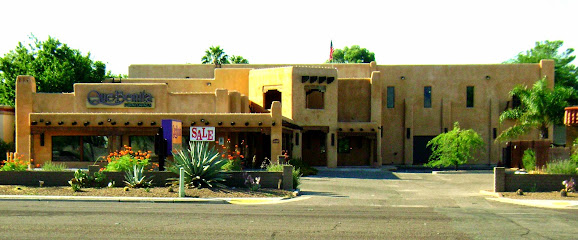
Clothing Exchange
Explore sustainable fashion and unique finds at Clothing Exchange, a thrift store in Sierra Vista, perfect for eco-conscious travelers.

Arizona Poppy
Explore Arizona Poppy - a unique gift shop in Tucson offering locally crafted treasures and artisanal products that capture the spirit of Arizona.

Essential bars & hidden hideouts
Colossal Cave Mountain Park
Discover the natural wonders and adventures at Colossal Cave Mountain Park, a must-visit destination for outdoor enthusiasts and history buffs alike.

Brother John's Beer Bourbon & BBQ
Experience the best of Tucson’s barbecue culture with a vast selection of beers and a welcoming atmosphere at Brother John's Beer Bourbon & BBQ.

Jolie's Place
Discover Jolie's Place: A vibrant grill in Chandler, AZ, offering delectable American cuisine, refreshing cocktails, and live music to enhance your dining experience.

The Horseshoe
Discover the flavors of Benson at The Horseshoe, where delicious local cuisine meets warm hospitality in a charming atmosphere.

The Coronado PHX
Experience the vibrant flavors of The Coronado PHX, a vegan bar and restaurant offering innovative dishes and crafted cocktails in Phoenix, Arizona.

McP's Irish Pub
Discover McP's Irish Pub: A charming blend of authentic Irish culture and California beach vibes, ideal for food, drinks, and entertainment.

Yucca Tap Room
Experience the vibrant atmosphere of Yucca Tap Room, where great food, live music, and arcade fun come together in Tempe, Arizona.

The Ostrich
Discover The Ostrich, Chandler's charming cocktail bar offering a unique speakeasy atmosphere and innovative drinks for an unforgettable night out.
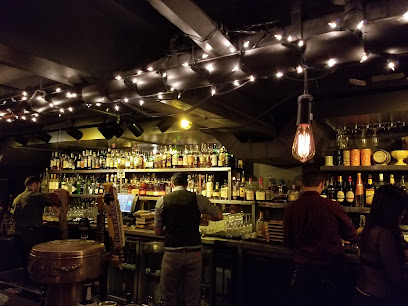
The White Rabbit
Discover the vibrant nightlife at The White Rabbit, a cocktail bar that combines a lounge atmosphere with disco energy in Gilbert, Arizona.

Farmhouse Restaurant
Experience the warmth of home-cooked meals at Farmhouse Restaurant, a family-friendly breakfast destination in Benson, Arizona.

Dickey's Barbecue Pit
Experience mouthwatering barbecue at Dickey's Barbecue Pit in Benson, Arizona - where every meal is a flavorful adventure.

Champions Sports Saloon
Discover the ultimate sports bar experience at Champions Sports Saloon, where excitement meets great food and drinks in Gilbert, Arizona.

12 West Brewing - Downtown Mesa
Experience the vibrant atmosphere and exceptional craft brews at 12 West Brewing in Downtown Mesa, a perfect blend of flavor and fun.

The Moon Saloon
Experience lively dining and sports entertainment at The Moon Saloon in Peoria, Arizona – where great food meets a vibrant atmosphere.

The Whining Pig Gilbert
Explore vibrant nightlife at The Whining Pig Gilbert, where craft beers and delicious pub fare meet a lively atmosphere for an unforgettable experience.

Local Phrases about Coronado National Forest
-
- HelloHowdy
[haw-dee] - GoodbyeAdios
[ah-dee-ose] - YesYup
[yuhp] - NoNope
[nohp] - Please/You're welcomePlease/Welcome
[pleez/wel-come] - Thank youThanks
[th-anks] - Excuse me/SorryPardon me
[par-dun mee] - How are you?Howdy partner?
[haw-dee par-tner] - Fine. And you?Just dandy. And you?
[just dan-dee. and yuh] - Do you speak English?Y'all speak English?
[yawl speak in-glish] - I don't understandI reckon I don't get it
[I rek-uhn I dohnt get it]
- HelloHowdy
-
- I'd like to see the menu, pleaseCan I take a gander at the bill, please
[kan I take uh gan-der at the bill, pleez] - I don't eat meatI don't fancy no meat
[I dohnt fan-see noh meat] - Cheers!Bottoms up!
[bot-uhms up] - I would like to pay, pleaseI reckon I need to settle up
[I rek-uhn I need to set-ul up]
- I'd like to see the menu, pleaseCan I take a gander at the bill, please
-
- Help!SOS!
[ess-oh-ess] - Go away!Git!
[jit] - Call the Police!Phone the Sheriff!
[fone the sher-iff] - Call a doctor!Get the doc!
[get the dok] - I'm lostI'm turned around
[I'm turnd uh-round] - I'm illI ain't feelin' right
[I aint fee-lin rahyt]
- Help!SOS!
-
- I'd like to buy...I reckon I need to purchase...
[I rek-uhn I need to pur-chase] - I'm just lookingI'm just browsin'
[I'm just brow-sin] - How much is it?What's the damage?
[whats the dam-ij] - That's too expensiveThat's mighty pricey
[thats mi-tee prahy-see] - Can you lower the price?Can y'all do a better deal?
[kan yawl doh uh bet-ter deel]
- I'd like to buy...I reckon I need to purchase...
-
- What time is it?What's the time o' day?
[whats the tahym oh day] - It's one o'clockIt's one
[its wuhn] - Half past (10)Half past ten
[haf past ten] - MorningMornin'
[morn-in] - AfternoonAfternoon
[af-ter-noon] - EveningEvenin'
[even-in] - YesterdayYest'day
[yest-dey] - TodayToday
[toh-day] - TomorrowTomorry
[tom-or-ee] - 1One
[wuhn] - 2Two
[too] - 3Three
[three] - 4Four
[for] - 5Five
[fahyv] - 6Six
[siks] - 7Seven
[sev-uhn] - 8Eight
[ayt] - 9Nine
[nine] - 10Ten
[ten]
- What time is it?What's the time o' day?
-
- Where's a/the...?Where's the...
[wheres the] - What's the address?Where's it at?
[wheres it at] - Can you show me (on the map)?Can y'all point it out (on the map)?
[kan yawl point it out on the map] - When's the next (bus)?When's the next (bus)?
[whens the next bus] - A ticket (to ....)A pass (to ....)
[uh pass to]
- Where's a/the...?Where's the...
History of Coronado National Forest
-
Coronado National Forest was officially established on April 11, 1902, by President Theodore Roosevelt. Named after the Spanish explorer Francisco Vásquez de Coronado, the forest spans over 1.78 million acres and includes various mountain ranges in southeastern Arizona and southwestern New Mexico. The forest was created to conserve natural resources and provide a public space for recreation, while also protecting the watershed from overgrazing and deforestation.
-
In 1540, the Spanish explorer Francisco Vásquez de Coronado embarked on an expedition to find the Seven Cities of Gold, rumored to be located in the American Southwest. Although he never found the mythical cities, his journey took him through areas that would later become part of the Coronado National Forest. His expedition marked one of the first European explorations into the region, significantly impacting the local indigenous cultures and setting the stage for future Spanish colonization.
-
Throughout the 19th century, the area now known as Coronado National Forest was a battleground during the Apache Wars. Native American tribes, including the Chiricahua Apaches led by famous chiefs like Cochise and Geronimo, resisted European-American settlers encroaching on their lands. The rugged terrain of the forest provided a strategic advantage for the Apaches, who utilized it for ambushes and as a hideout during conflicts with U.S. military forces. The Apache Wars eventually ended in the late 1880s, leading to the relocation of many Apache people to reservations.
-
The late 19th and early 20th centuries saw a boom in mining and ranching activities within what is now Coronado National Forest. Rich deposits of minerals, including copper, silver, and gold, attracted prospectors and mining companies to the region. Simultaneously, ranchers established cattle and sheep operations, utilizing the fertile grasslands. This era of economic activity left a lasting legacy on the landscape, with remnants of old mines and ranches still visible today.
-
During the Great Depression, the Civilian Conservation Corps (CCC) played a significant role in developing infrastructure within Coronado National Forest. From 1933 to 1942, the CCC built trails, roads, fire lookout towers, and campgrounds, many of which are still in use today. Their work not only provided employment for thousands of young men but also improved access and facilities for future generations of visitors.
-
In 1976, the United Nations Educational, Scientific and Cultural Organization (UNESCO) designated the Coronado National Forest's San Pedro Riparian National Conservation Area as a Biosphere Reserve. This designation recognizes the area's unique ecological and cultural significance, highlighting its importance for conservation, research, and education. The San Pedro River, one of the last free-flowing rivers in the Southwest, serves as a critical habitat for numerous species and a vital corridor for migratory birds.
Coronado National Forest Essentials
-
Coronado National Forest is located in southeastern Arizona. The nearest major airports are Tucson International Airport (TUS), approximately 70 miles away, and Phoenix Sky Harbor International Airport (PHX), about 180 miles away. From Tucson, you can rent a car and drive to the forest, which typically takes around 1.5 hours. There are no direct public transport options to the forest, so renting a car or hiring a shuttle service is recommended.
-
Once you arrive, the best way to explore Coronado National Forest is by car, as public transportation within the forest is limited. Many of the forest's scenic drives and trailheads are accessible by well-maintained roads. Ensure your vehicle is equipped for mountain driving, especially if you plan to venture into more remote areas. Additionally, consider renting a 4WD vehicle if you plan to explore off-road trails.
-
The official currency in the United States is the US Dollar (USD). Credit and debit cards are widely accepted in most hotels, restaurants, and shops in nearby towns such as Tucson and Sierra Vista. However, it is advisable to carry some cash for smaller establishments, entrance fees, and other miscellaneous expenses within the forest. ATMs are available in nearby towns but are not present within the forest itself.
-
Coronado National Forest is generally safe for tourists, but it is essential to take standard precautions. Avoid leaving valuables in your car, be cautious of wildlife, and stay on marked trails. Be aware of your surroundings and avoid isolated areas, especially at night. While crime rates targeting tourists are low within the forest, always stay vigilant, particularly in nearby urban areas. Check local advisories for any high-crime neighborhoods in Tucson if you plan to stay there.
-
In case of an emergency, dial 911 for immediate assistance. The forest is patrolled by US Forest Service rangers who can provide help. It is highly recommended to have travel insurance that covers medical emergencies. Carry a first-aid kit and know the locations of the nearest medical facilities, which are in Tucson and Sierra Vista. Inform someone of your travel plans and expected return time when hiking or exploring remote areas.
-
Fashion: Do wear comfortable, weather-appropriate clothing and sturdy hiking boots. Avoid wearing flip-flops or open-toed shoes when hiking. Religion: Do respect any cultural or spiritual sites you may encounter. Public Transport: Do note that there is limited public transport; renting a car is the best option. Greetings: Do greet people with a friendly wave or nod. Eating & Drinking: Do carry sufficient water and snacks, as amenities can be sparse within the forest. Don't litter; always pack out what you pack in.
-
To experience Coronado National Forest like a local, consider visiting during the cooler months when the weather is more pleasant for outdoor activities. Participate in ranger-led programs to learn about the forest's ecology and history. Visit lesser-known spots like the Madera Canyon for bird watching, or the Sabino Canyon for unique desert flora and fauna. Engage with locals in nearby towns to get recommendations on hidden gems and off-the-beaten-path trails.
Nearby Cities to Coronado National Forest
-
Things To Do in Tucson
-
Things To Do in Chandler
-
Things To Do in Gilbert
-
Things To Do in Mesa
-
Things To Do in Tempe
-
Things To Do in Scottsdale
-
Things To Do in Phoenix
-
Things To Do in Truth or Consequences
-
Things To Do in Las Cruces
-
Things To Do in Winslow
-
Things To Do in Prescott
-
Things To Do in Sedona
-
Things To Do in El Paso
-
Things To Do in White Sands
-
Things To Do in Flagstaff













